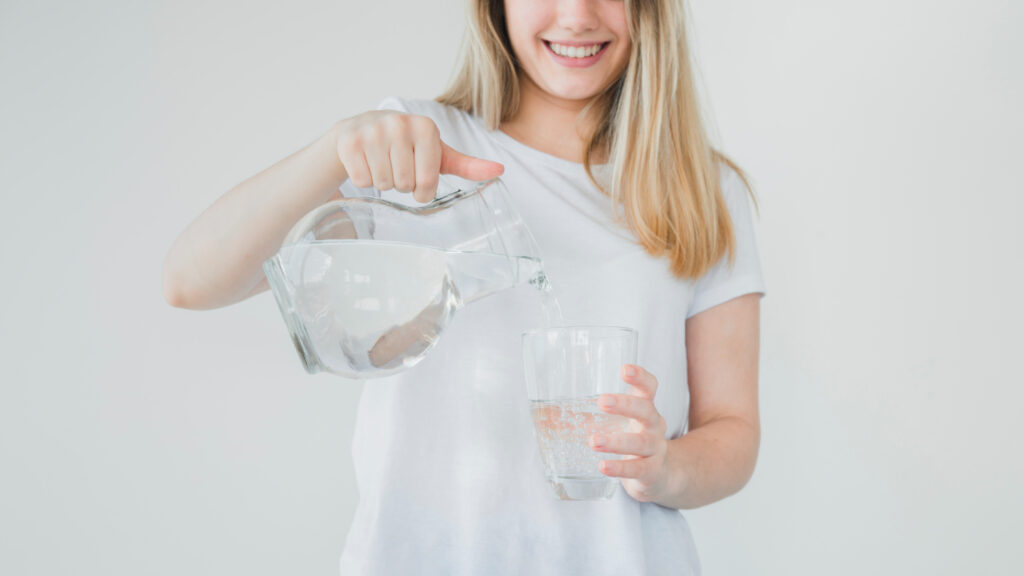Water is essential to life — but not all water is created equal. While staying hydrated is key to good health, the quality of the water you drink is just as important as the quantity. Contaminated or chemically treated water may carry risks you’re not even aware of, from short-term digestive issues to long-term health concerns.
In this article, we’ll explore:
- Why hydration matters
- The hidden contaminants in your water
- How to protect yourself and your family with safe hydration habits
???? Why Hydration Is Essential
Your body is made up of around 60% water, and every system in your body depends on it. Proper hydration supports:
- Brain function and mental clarity
- Digestion and nutrient absorption
- Joint lubrication
- Temperature regulation
- Detoxification through the kidneys and liver
Even mild dehydration can lead to fatigue, headaches, mood swings, and poor concentration.
But here’s the catch: hydrating with contaminated water may do more harm than good.
???? What’s Really in Your Water?
Municipal tap water, well water, and even some bottled waters can contain harmful contaminants. While many are regulated, others may slip through due to aging infrastructure or industrial pollution.
Common Contaminants to Watch Out For:
???? Lead
- Comes from old pipes and plumbing systems
- Especially dangerous for children — affects brain development
- Even low levels over time can cause serious damage
???? Chlorine and Chloramine
- Used to disinfect public water supplies
- May irritate skin and eyes; linked to respiratory issues
- Can form toxic byproducts like trihalomethanes (THMs)
???? PFAS (“Forever Chemicals”)
- Found in nonstick cookware, fire retardants, and packaging
- Linked to cancer, immune system issues, and hormonal disruption
- Difficult to remove once in water systems
???? Microorganisms (Bacteria, Viruses, Parasites)
- Can enter through unfiltered well water or broken pipes
- Cause gastrointestinal illness, especially in children and the elderly
???? Pesticides and Nitrates
- From agricultural runoff
- Linked to hormone disruption and increased cancer risk
???? Fluoride (Controversial)
- Added for dental health, but some studies link excessive fluoride to neurological effects and thyroid issues
???? Is Bottled Water Safer?
Not necessarily. Bottled water:
- May come from the same municipal sources as tap water
- Can contain microplastics from packaging
- Lacks strict regulation compared to public water systems
- Is expensive and environmentally harmful
✅ How to Protect Yourself: Steps for Safer Hydration
1. Know Your Water Source
- Use tools like the EPA’s Tap Water Database or request a Water Quality Report (Consumer Confidence Report) from your local utility
- If you use a well, test your water yearly
2. Use a Water Filter
Not all filters are equal. Choose based on the contaminants you’re concerned about.
| Contaminant | Recommended Filter |
|---|---|
| Lead | NSF/ANSI 53-certified filters (e.g., Brita Longlast+, PUR) |
| PFAS | Reverse osmosis or activated carbon filters |
| Microbes | UV purifiers or boiling |
| Chlorine | Activated carbon filters |
3. Clean Your Filter Regularly
Old or clogged filters can grow bacteria and make water worse than unfiltered.
4. Use Glass or Stainless Steel Bottles
Avoid plastic bottles that can leach chemicals, especially when exposed to heat.
5. Hydrate Intentionally
- Start your day with 1–2 glasses of filtered water
- Add lemon or a pinch of sea salt for natural electrolytes
- Drink more during hot weather or when exercising
???? Final Thoughts: Don’t Just Drink Water — Drink Safe Water
Water is life — but only when it’s clean and safe. Staying hydrated is non-negotiable for your health, but don’t overlook what’s in your glass. Investing in a quality water filter, understanding your local water source, and avoiding unnecessary exposure to contaminants are small steps that can make a big difference.
Your body deserves clean, pure water — every single day.

